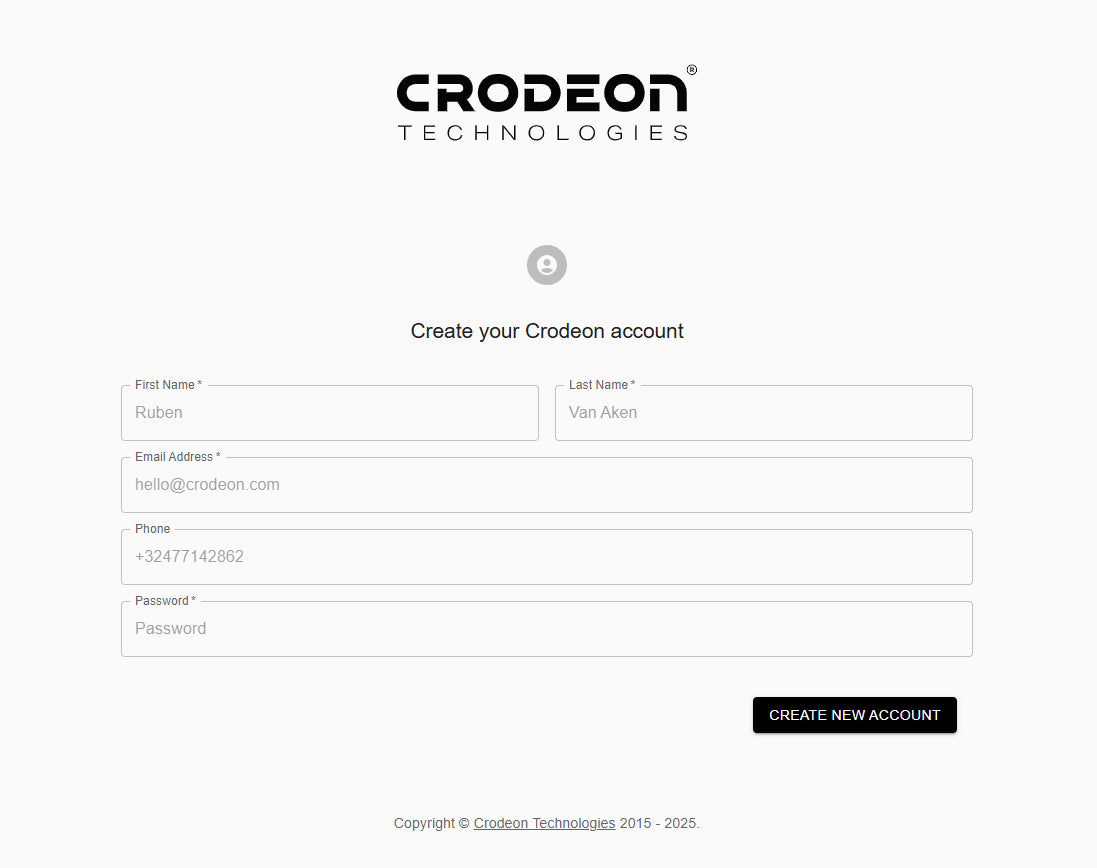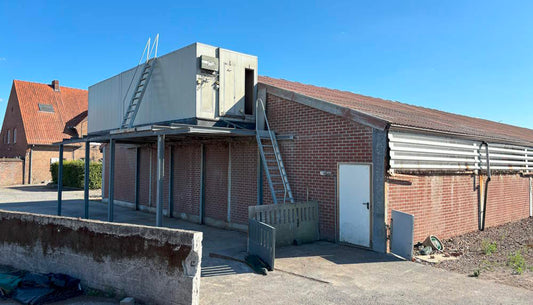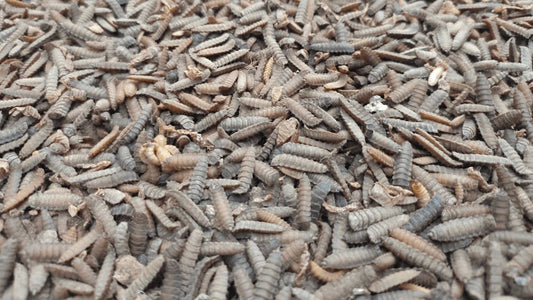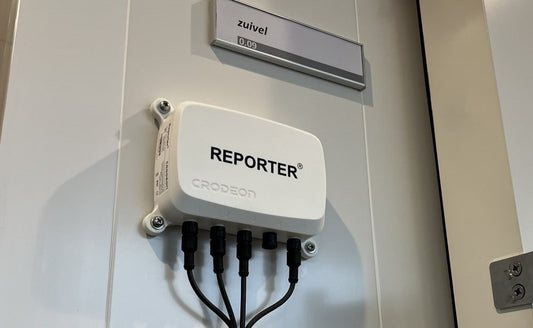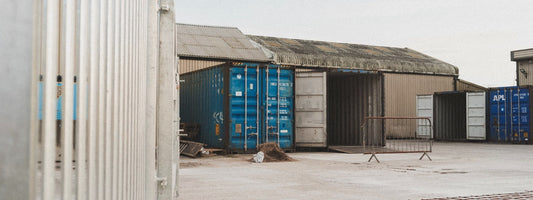Surveillance électronique de votre laveur d'air existant
Larves de mouches soldats : guide pour un environnement de croissance optimal
Lactalis utilise Reporter pour la surveillance de la température dans ses entrepôts
Mesure de niveau d'eau dans un conteneur ou un puits
Surveillance à distance des pompes
Surveiller la santé des arbres pendant un chantier avec rabattement de nappe
Pourquoi les capteurs ne sont pas d'accord : explication des légères différences de température
Le meilleur dispositif de surveillance de la température de la chaîne du froid pour le transport réfrigéré
Le château de vin Vandeurzen prévient les dégâts de gel des fleurs de vigne avec Reporter
Appareil IoT 5G et alimenté à l'énergie solaire : Reporter révolutionne la surveillance à distance
Surveillance des murs végétalisés : pourquoi votre jardin vertical a besoin de capteurs connectés
Surveillance intelligente des filtres plantés de roseaux pour le lagunage des eaux usées
Surveillance en temps réel des inondations
VITO aide à améliorer la rétention et l'utilisation de l'eau en Flandre
BioscienZ optimise la recherche en fermentation avec Reporter
Surveillance connectée des déversoirs dans le réseau d’assainissement d’Aquafin
Culture durable des myrtilles : étude de cas
A-Renting : location de conteneurs frigorifiques avec surveillance fiable de la température grâce à Reporter
Suivez la consommation énergétique, l'utilisation du gaz et les besoins en eau de votre usine
Un pluviomètre professionnel de surveillance à distance avec mesures numériques
Mesures d'humidité d'entrepôt pour le stockage du papier et la surveillance du carton
Surveillance du CO2 dans l’élevage : un retard à rattraper
Surveillance innovante des talus le long de l'A10 avec Reporter
Une station météorologique avec capteur de niveau d'eau pour marina ou port
Colruyt Group utilise Reporter pour les mesures d'humidité du sol à la ferme biologique Het Zilverleen
Surveillance du sel dans les eaux souterraines pendant le rabattement de nappe
Le Royal Latem Golf Club utilise Reporter pour la surveillance de l'eau
Connecter un capteur de débit d'eau au cloud
Qu'est-ce qu'un adaptateur de capteur et pourquoi est-il indispensable ?
Comment Rode Rozen & Tortilla's garantit une surveillance optimale de la température avec Reporter
Artes Woudenberg utilise Reporter pour surveiller le vent lors de la restauration du Palais de Justice de Bruxelles
Capteurs pour ports et terminaux connectés
Surveillance des précipitations dans les terminaux et ports de vrac sec
Pluym-Van Loon utilise Reporter pour la surveillance du niveau des eaux souterraines sur les chantiers de construction
Surveillance de chantier – sécurité et efficacité
Surveillance efficace des odeurs industrielles
Pourquoi le contrôle de la température est incomplet sans surveillance à distance
Taste Restaurantgroup utilise Reporter pour la surveillance des congélateurs
Cemminerals utilise Reporter pour mesurer la température de l'eau du canal
Rombaut Plant uses Reporter for frost monitoring in potted plants
Surveillance de toits verts
Vandijk Technics utilise Reporter pour l'enregistrement de la température dans les chambres froides
Mesure combinée de l'humidité relative de l'air et de l'humidité des feuilles
Surveillance innovante des arbres : dendromètre Ecomatik intégré à Reporter
De Bossen mesure l'humidité du sol pour une récolte abondante de haricots à rames
TM Edison utilise Reporter pour construire son îlot énergétique
Quelle est la différence entre les compteurs d’énergie directs et indirects ?
Surveillance météorologique : mesurer le vent sur le site d'un festival
Choisissez le bon débitmètre pour votre prochain projet hydraulique
Comment mesurer le point de rosée et la température du bulbe humide
Reporter est un module de capteur utilisé pour la surveillance à distance. Pour démarrer votre projet de mesure, il est bien sûr important de connecter correctement vos capteurs. Nous vous fournissons un bref guide général.
Si un guide d'installation séparé est disponible pour votre capteur, vous pourrez le trouver à la fin de ce blog.
Connexion d'un capteur au connecteur M12
Lors de la connexion d'un capteur au connecteur M12 (le dispositif a un connecteur mâle, le capteur a un connecteur femelle), vous devez prêter attention à quelques points :
1. Assurez-vous que le capteur est bien fixé
Le câble du capteur ne doit pas pouvoir tomber du connecteur. Non seulement vos mesures s'arrêteraient, mais l'étanchéité du Reporter serait compromise.

2. Le bon capteur pour votre Reporter
- N'utilisez que des capteurs compatibles avec votre version de Reporter.
- Faites attention à la saillie dans le port du connecteur mâle et à l'encoche dans le port du connecteur femelle.
Si vous avez une question concernant la compatibilité d'un capteur d'un autre système avec Reporter, n'hésitez pas à nous contacter.

Extension des câbles de capteurs
La plupart des capteurs ont une longueur de câble standard de 5 mètres, mais il est tout à fait possible de prolonger ce câble avec le câble d'extension pour capteur disponible dans notre boutique.
Éviter les obstructions de données
Lors de l'installation de votre capteur, il est judicieux de prêter une attention supplémentaire à l'environnement. Tout ce qui pourrait influencer vos mesures doit être évité. Vous connaissez votre projet mieux que quiconque, nous vous conseillons donc de réfléchir à l'emplacement optimal du capteur.
Pour des informations spécifiques à chaque capteur, nous vous recommandons de lire le guide d'installation séparé.
Bouchons anti-poussière
Reporter est fourni avec cinq bouchons anti-poussière qui s'adaptent parfaitement aux connecteurs. Les bouchons sont doublés de silicone, ce qui garantit que l'eau et la poussière ne peuvent pas pénétrer dans l'appareil par les ports. Pour garantir que Reporter reste conforme à la norme IP67, les bouchons doivent rester fermement fixés lorsque le connecteur n'est pas utilisé pour un capteur.

Guides d'installation de capteurs séparés
Co-fondateur et CEO de Crodeon, Jonathan sait à quel point les capteurs peuvent changer notre quotidien. Au cours de ces 7 dernières années, il a rencontré des clients de nombreux secteurs, de l'agriculture à l'industrie. Jonathan connaît les tenants et les aboutissants de l'Internet des Objets et ce qui tracasse nos clients.







